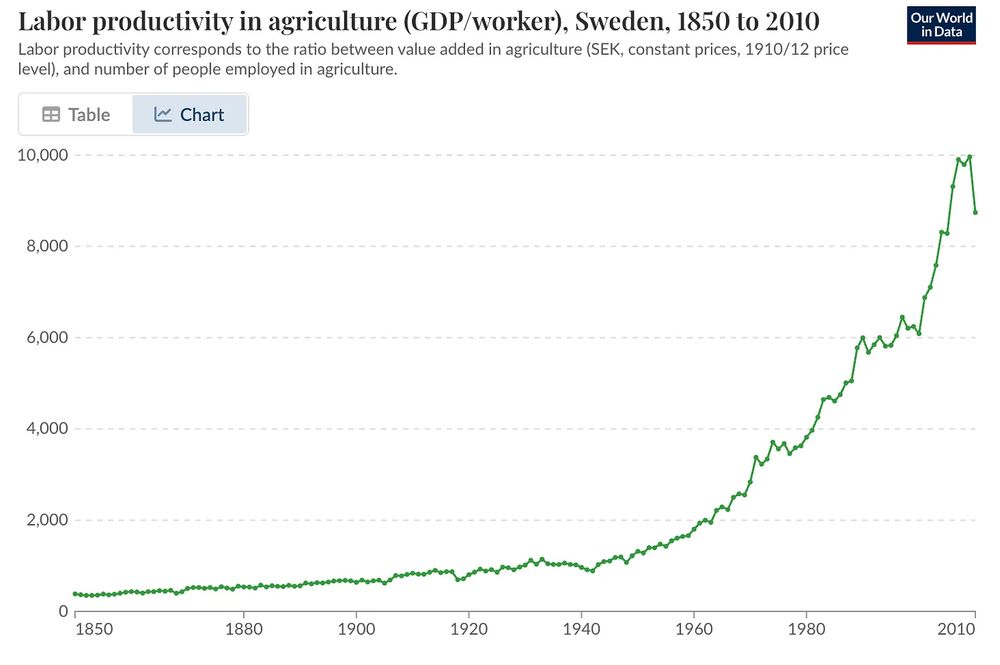
Deena Mousa
@deenamousa.com
Gift link: ter.li/DeenaM

AI is changing how we quantify pain
Artificial intelligence is helping health-care providers better assess their patients’ discomfort.
www.technologyreview.com
October 15, 2025 at 5:49 PM
Gift link: ter.li/DeenaM
PainChek Adult was offered de novo FDA clearance this week, and engineers are now adapting the code for the very youngest patients. PainChek Infant targets babies under one year, whose grimaces flicker faster.
October 15, 2025 at 5:49 PM
PainChek Adult was offered de novo FDA clearance this week, and engineers are now adapting the code for the very youngest patients. PainChek Infant targets babies under one year, whose grimaces flicker faster.
Data shows a ~25% drop in antipsychotic use and, in Scotland, a 42% reduction in falls from use. One clinician mentioned that residents who had skipped meals because of undetected dental pain began eating again, and those who were isolated due to pain began socializing.
October 15, 2025 at 5:49 PM
Data shows a ~25% drop in antipsychotic use and, in Scotland, a 42% reduction in falls from use. One clinician mentioned that residents who had skipped meals because of undetected dental pain began eating again, and those who were isolated due to pain began socializing.
Linking the scan to a human‑filled checklist was, they admit, a late design choice. Initially, they thought AI should automate everything but found that hybrid use yielded better results...
October 15, 2025 at 5:49 PM
Linking the scan to a human‑filled checklist was, they admit, a late design choice. Initially, they thought AI should automate everything but found that hybrid use yielded better results...
There are several devices in clinical use today, like PainChek, a smartphone app that scans the facial expressions of people who have dementia and uses AI to output an expected pain score to inform their care.
They also record data for the patient and facility over time.
They also record data for the patient and facility over time.

October 15, 2025 at 5:49 PM
There are several devices in clinical use today, like PainChek, a smartphone app that scans the facial expressions of people who have dementia and uses AI to output an expected pain score to inform their care.
They also record data for the patient and facility over time.
They also record data for the patient and facility over time.
Full paper: www.thelancet.com/journals/la...
October 15, 2025 at 1:34 PM
Full paper: www.thelancet.com/journals/la...
Data from www.jpain.org/article/S15...
October 15, 2025 at 4:00 AM
Data from www.jpain.org/article/S15...
Read the full post here: newsletter.deenamousa.com/p/when-more...

When more automation means more human workers
A look at elasticity of demand
newsletter.deenamousa.com
October 7, 2025 at 2:13 PM
Read the full post here: newsletter.deenamousa.com/p/when-more...
There are exceptions to this rule, though; the rise in mobile banking eventually did reduce bank teller employment. If the technology fully replaces human inputs, or drives efficiency gains so large they outpace the increase in demand, jobs will be lost.


October 7, 2025 at 2:13 PM
There are exceptions to this rule, though; the rise in mobile banking eventually did reduce bank teller employment. If the technology fully replaces human inputs, or drives efficiency gains so large they outpace the increase in demand, jobs will be lost.
In each of these cases, employment holds steady, but the skill mix changes. The work gets more complex as machines take over the simplest tasks.
October 7, 2025 at 2:13 PM
In each of these cases, employment holds steady, but the skill mix changes. The work gets more complex as machines take over the simplest tasks.
This can happen in other fields too — for example, spreadsheets didn't get rid of accountants, but rather made them more in demand than before. In law, predictive coding and e-discovery tools reduce grunt work but let firms take on more complex cases.
October 7, 2025 at 2:13 PM
This can happen in other fields too — for example, spreadsheets didn't get rid of accountants, but rather made them more in demand than before. In law, predictive coding and e-discovery tools reduce grunt work but let firms take on more complex cases.
This is an example of Jevons paradox: when tech makes something cheaper or more efficient to use, we'd expect to use less of it and achieve the same result. But in some cases, people use *more* of the good because it's more accessible.
October 7, 2025 at 2:13 PM
This is an example of Jevons paradox: when tech makes something cheaper or more efficient to use, we'd expect to use less of it and achieve the same result. But in some cases, people use *more* of the good because it's more accessible.
When ATMs spread across the U.S., you'd expect bank tellers to be laid off en masse. But teller employment actually rose during the 2000s, growing 2% annually.
By reducing the cost of operating bank branches, ATMs made it possible for banks to open more locations.
By reducing the cost of operating bank branches, ATMs made it possible for banks to open more locations.

October 7, 2025 at 2:13 PM
When ATMs spread across the U.S., you'd expect bank tellers to be laid off en masse. But teller employment actually rose during the 2000s, growing 2% annually.
By reducing the cost of operating bank branches, ATMs made it possible for banks to open more locations.
By reducing the cost of operating bank branches, ATMs made it possible for banks to open more locations.
If you enjoyed the article, I write about health, economic development, and scientific and technological progress here: newsletter.deenamousa.com/

Under Development | Deena Mousa | Substack
Writing about global health and development. Click to read Under Development, by Deena Mousa, a Substack publication.
newsletter.deenamousa.com
September 25, 2025 at 1:53 PM
If you enjoyed the article, I write about health, economic development, and scientific and technological progress here: newsletter.deenamousa.com/
AI radiology today is powerful, but it consists of many narrow islands of automation that have failed to replace radiologists' time.
This isn't the full picture. Read more in the @worksinprogress.bsky.social piece: worksinprogress.co/issue/the-a...
This isn't the full picture. Read more in the @worksinprogress.bsky.social piece: worksinprogress.co/issue/the-a...

The algorithm will see you now - Works in Progress Magazine
Radiology combines digital images, clear benchmarks, and repeatable tasks. But replacing humans with AI is harder than it seems.
worksinprogress.co
September 25, 2025 at 1:53 PM
AI radiology today is powerful, but it consists of many narrow islands of automation that have failed to replace radiologists' time.
This isn't the full picture. Read more in the @worksinprogress.bsky.social piece: worksinprogress.co/issue/the-a...
This isn't the full picture. Read more in the @worksinprogress.bsky.social piece: worksinprogress.co/issue/the-a...
On top of this, datasets are still a barrier for some scans and patient populations. Even with 700+ FDA-approved imaging AIs, they cover only a fraction of real-world work; most cluster around a few conditions like stroke, breast cancer, or lung cancer.
September 25, 2025 at 1:53 PM
On top of this, datasets are still a barrier for some scans and patient populations. Even with 700+ FDA-approved imaging AIs, they cover only a fraction of real-world work; most cluster around a few conditions like stroke, breast cancer, or lung cancer.
There’s another catch: many models struggle outside the hospital they were trained in. In 2024, 38% of FDA-cleared radiology AIs were tested on data from just one hospital. Move them elsewhere, and accuracy can drop by up to 20 percentage points.
September 25, 2025 at 1:53 PM
There’s another catch: many models struggle outside the hospital they were trained in. In 2024, 38% of FDA-cleared radiology AIs were tested on data from just one hospital. Move them elsewhere, and accuracy can drop by up to 20 percentage points.
Even platforms that bundle multiple models still spit out a list of disconnected yes/no answers.
But a good radiologist integrates findings, context, and patient history into a single coherent view of a person's health.
But a good radiologist integrates findings, context, and patient history into a single coherent view of a person's health.
September 25, 2025 at 1:53 PM
Even platforms that bundle multiple models still spit out a list of disconnected yes/no answers.
But a good radiologist integrates findings, context, and patient history into a single coherent view of a person's health.
But a good radiologist integrates findings, context, and patient history into a single coherent view of a person's health.
That means a radiologist can’t just “hand off” a scan to AI. To cover a typical day, they’d need to pick from dozens of different models, run each one separately, and stitch the answers together.
September 25, 2025 at 1:53 PM
That means a radiologist can’t just “hand off” a scan to AI. To cover a typical day, they’d need to pick from dozens of different models, run each one separately, and stitch the answers together.
One reason for this: radiology AI doesn't read and form a holistic view on a scan like a doctor does.
Each model is built to answer a single narrow question:
– Is there pneumonia in this chest X-ray?
– Is there a lung nodule in this CT?
– What’s the calcium score in this scan?
Each model is built to answer a single narrow question:
– Is there pneumonia in this chest X-ray?
– Is there a lung nodule in this CT?
– What’s the calcium score in this scan?
September 25, 2025 at 1:53 PM
One reason for this: radiology AI doesn't read and form a holistic view on a scan like a doctor does.
Each model is built to answer a single narrow question:
– Is there pneumonia in this chest X-ray?
– Is there a lung nodule in this CT?
– What’s the calcium score in this scan?
Each model is built to answer a single narrow question:
– Is there pneumonia in this chest X-ray?
– Is there a lung nodule in this CT?
– What’s the calcium score in this scan?
If benchmark performance translated to reality, radiologists should be the canary in the coal mine of AI job loss.
Instead, radiology residency slots hit a record high in 2025.
Instead, radiology residency slots hit a record high in 2025.
September 25, 2025 at 1:53 PM
If benchmark performance translated to reality, radiologists should be the canary in the coal mine of AI job loss.
Instead, radiology residency slots hit a record high in 2025.
Instead, radiology residency slots hit a record high in 2025.

